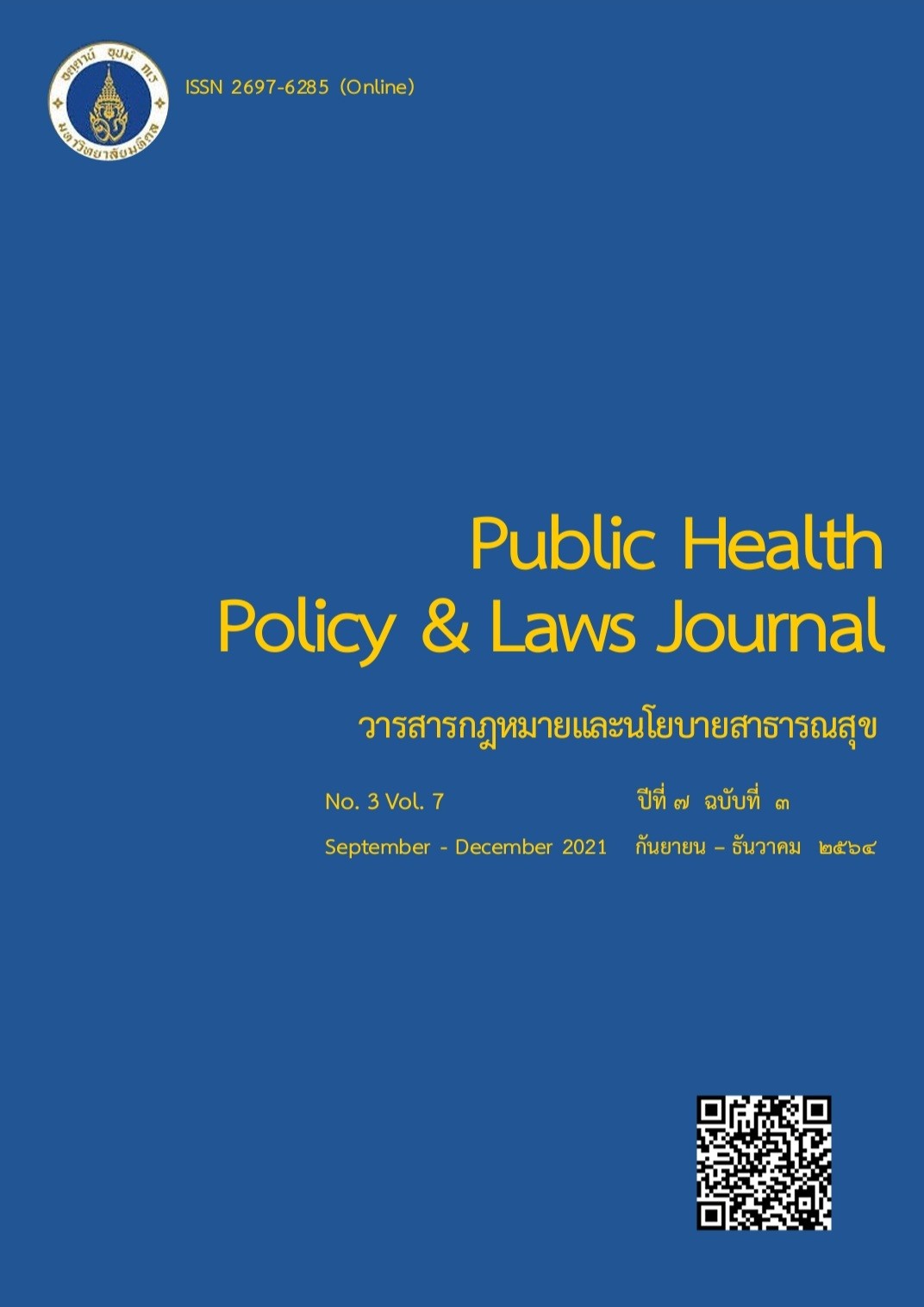Factors affecting surgeon’s demand feasibility in the implementation of Thailand’s medical device registry of breast implant patients
Keywords:
Demand Feasibility, implanted silicone breast prosthesis, implant patient registry, surgeonsAbstract
This cross-sectional descriptive study investigates the demand feasibility of surgeons in the implementation of Thailand’s medical device registry and studies the factors affecting surgeon’s demand feasibility in the implementation of Thailand’s medical device registry of breast implant patients. There were 160 sample surgeons and data gathered by Google Form Self-Reported Questionnaires. The Questionnaires were divided into 7 parts. Data were analyzed using descriptive statistics, percentages, mean, and standard deviations. Logistic regression was used for hypothesis testing at 0.05.
Results showed that the factors acceptability were at a high level (percentage of mean 93.19), adequacy was at a low level (percentage of mean 44%), practice was at a high level (mean 37.50, S.D.0.51), motivation was at a high level (mean 18.86, S.D.0.60), and privacy was at a high level (mean 18.81, S.D.0.52). Logistic regression showed that acceptability, adequacy, practice, motivation, and privacy were statistically significant factors predicting surgeon’s demand feasibility at 83.7%.
Policymakers could utilize the factors in this study to enhance the safety of medical device policy. As a pilot study to pursue the implementation of a breast implant patient registry in different stakeholders, this could be used to enhance consumer protection.
References
มณีรัตน์ ธีระวิวัฒน์. (2558). การประเมินผลโครงการสุขศึกษาและส่งเสริมคุณภาพ. วารสารสุขศึกษาปีที่ 38 ฉบับที่ 131. 2558:1-179.
พระราชกฤษฎีกากำหนดหน่วยงานและกิจการที่ผู้ควบคุมข้อมูลส่วนบุคคลไม่อยู่ ภายใต้บังคับแห่งพระราชบัญญัติคุ้มครองข้อมูลส่วนบุคคล พ.ศ. 2562 (ฉบับที่ 2). (2564). พระราชกฤษฎีกา. [Internet]. [cited 8 May 2021]. Available from: http://www.krisdika.go.th
Bowen D.J., Kreuter M., Spring B., Cofta-Woerpel L., Linnan L.,Weiner D., Bakken S., et al. (2009).How We Design Feasibility Studies. American Journal of Preventive Medicine.; 36(5): 452-7.
Daniel WW. (2010). Biostatistics: a foundation for analysis in the health sciences: 5thed. New York: John Wiley and Son.
Good, C.V. (1973). Dictionary of Education. New York: McGraw-Hill. Herzberg F Mausner B and Snyderman B.The Motivation to work . (2nd ed.).
ISAPS. (2016). Plastic Surgery Statistics Global Plastic Surgery Statistics. [Internet]. [cited 1 July 2016] Available from: https://www.isaps.org/medical-professionals/isaps-global-statistics/.
Knight R et al. (2016). Epidemiology and risk factors for Breast implant-associated anaplastic large cell lymphoma (BIA-ALCL) in Australia & New Zealand. Plastic & Reconstructive Surgery Global Open 2016;4(9S)82-83.
Simpson M, R Buckman, M Stewart, P Maguire, M Lipkin, D Novack, and J Till. (1991). Doctor-Patient Communication the Toronto consensus statement. [Internet].[cited 1991 Nov 30]. Available from: https://www.ncbi.nlm.nih.gov/pmc/articles/PMC1671610/
Swerdlow SH, Campo E, Pileri SA et al. (2016).The 2016 revision of the World Health Organisation classification of lymphoid neoplasms. Blood 2016; 127(2):2375-2390.
WHO. (2016). who-classifies-bia-alcl-as-a-distinct-of-lymphoma. [Internet]. [cited 16 June 2016]. Available from: www.plasticsurgery.org/Health-Policy
Downloads
Published
How to Cite
Issue
Section
License
Disclaimer and Copyright Notice
The content and information presented in articles published in the Journal of Law and Public Health Policy represent the opinions and sole responsibility of the respective authors. The editorial board does not necessarily agree with or assume any responsibility for the views expressed.
All articles, data, content, images, and other materials published in the Journal of Law and Public Health Policy are the intellectual property of the journal. Any individual or organization wishing to reproduce, distribute, or otherwise use the entirety or any part of such materials must provide proper citation.





